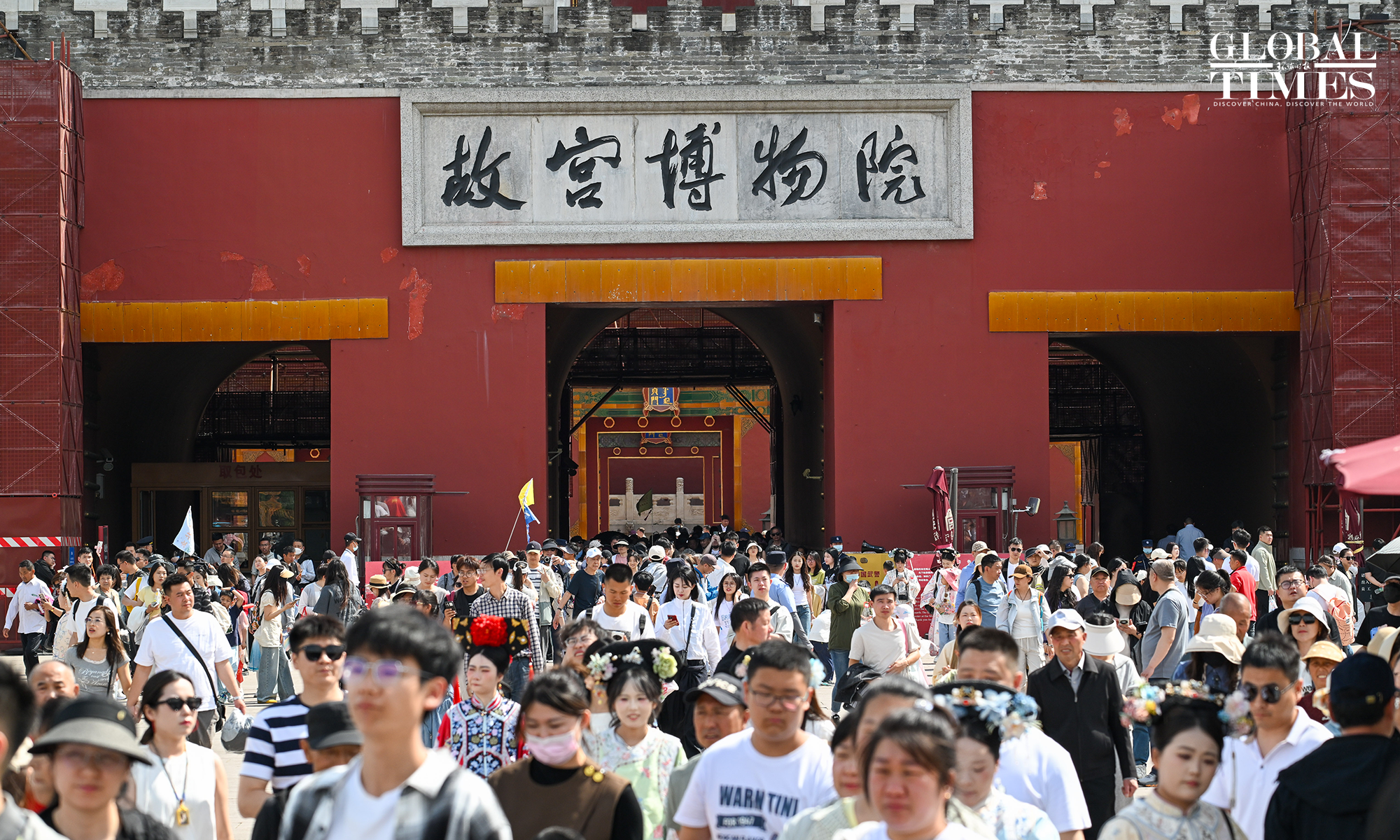Photo: Li Hao/GT
The number of travelers on the first day of May Day holiday is expected to grow 8 percent compared with the same period of last year, the People’s Daily reported on Thursday, the first day of the holiday, citing data from Ministry of Transport (MOT). A Chinese expert said the data could indicate a boost for consumption growth in the second quarter of this year.
In specific, railways across the country expects 8.7 percent of growth in terms of passenger volumes on Thursday, MOT said.
Shanghai’s rail network is projected to dispatch 770,000 passenger trips on Thursday alone—a 17.3 percent year-on-year jump, according to the local railway authority. The Yangtze River Delta region is expected to transport 4.2 million passenger trips on Thursday, marking a 12.5 percent increase and potentially setting a new daily ridership record. Meanwhile, Zhengzhou rail network is prepared to transport 955,000 passengers on the holiday’s first day.
Roadways are equally busy, with national highways forecasting an average daily traffic volume of 62 million vehicles—an 8.1 percent rise over 2024. On Thursday, the road traffic is expected to reach 2.1 times normal levels, according to Ministry of Transport.
Notably, Hengqin port in Zhuhai, South China’s Guangdong Province recorded over 10,000 daily vehicle crossings for the first time on Wednesday. This is also the seventh time this year that it has set a new historical high.
Airports are also experiencing a travel boom. Shanghai’s two airports are expected to handle 12,000 flights and 1.88 million passenger trips during the five-day holiday, with daily passenger volumes up 10.9 percent year-on-year.
During the five-day May Day holiday in 2025, Beijing Capital International Airport is expected to handle 957,000 passenger trips, with a daily average of 191,000, and facilitate 5,880 flights, averaging 1,176 per day. On April 25, the airport’s international and regional passenger throughput exceeded 5 million trips, a 19 percent year-on-year increase, with notable growth in traffic to and from South Korea, the UK, and the UAE, the Global Times learned.
China Southern Group plans to operate 23,000 flights between April 29 to May 6, offering 4.45 million seats to meet rising demand, the Global Times learned from the airlines.
Travel platforms are capturing emerging travel trends. Data provided by qunar.com to the Global Times shows a steady rise in flight and hotel reservations, with bookings for high-star hotels surging by 30 percent in some counties. Travelers are increasingly seeking out unique experiences, such as pet-friendly vacations and laid-back “stroll vacations” that emphasize leisurely exploration.
In domestic travel, major cities like Beijing, Guangzhou and Shenzhen in South China’s Guangdong Province, and Shanghai are once again taking center stage, projected to attract nearly 60 percent of tourists across the country during the holiday, CCTV reported on Thursday, citing big data.
Analysis of international roaming data showed that orders for international roaming services surged by over 50 percent year-on-year in the week leading up to the holiday. Short-haul outbound trips to Japan, South Korea and Southeast Asia accounted for more than 60 percent of bookings, while long-haul journeys to Europe saw a 27 percent increase. Boosted by favorable policies such as transit visa exemption and tax refund service, China is becoming an increasingly popular destination for foreign visitors. In the same pre-holiday week, tourists from visa-exempt countries made up nearly 70 percent of arrivals, with the number of visitors from France, Mexico, Austria, Russia, and Germany soaring by more than 79 percent, according to CCTV.
As one of the major national holidays, the May Day break has long served as a barometer of consumer trends. Based on current travel platform data, actual consumption during this period is likely to surpass initial expectations, Hu Qimu, deputy secretary-general of the digital-real economies integration Forum 50, told the Global Times.
This will have a strong driving effect on consumer service sectors such as catering, accommodation, and transportation, boosting consumption growth in the second quarter and playing a key role in overall consumption expansion, Hu said.


